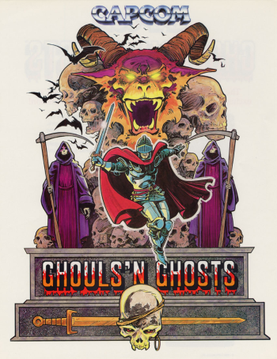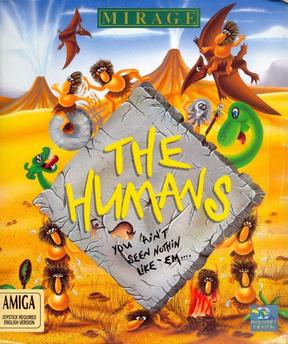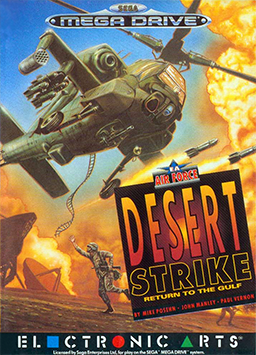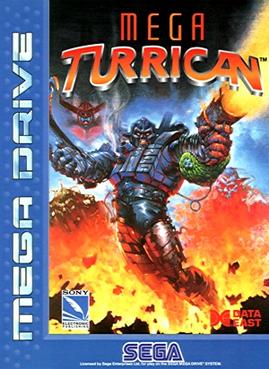
The 32X is an add-on for the Sega Genesis video game console. Codenamed "Project Mars", it was designed to expand the power of the Genesis and serve as a transitional console into the 32-bit era until the release of the Sega Saturn. The 32X uses its own ROM cartridges and has its own library of games. It was distributed under the name Super 32X in Japan and South Korea, Genesis 32X in North America, Mega 32X in Brazil, and Mega Drive 32X in all other regions.

NBA Jam is a basketball video game developed and published by Midway for arcades in 1993. It is the first entry in the NBA Jam series. The project leader for this game was Mark Turmell.

Ghouls 'n Ghosts, known as Dai Makaimura in Japan, is a side-scrolling platform game developed by Capcom, released as an arcade video game in 1988 and ported to home platforms. It is the sequel to Ghosts 'n Goblins and the second game in the Ghosts 'n Goblins series.
A sports video game is a video game that simulates the practice of sports. Most sports have been recreated with video games, including team sports, track and field, extreme sports, and combat sports. Some games emphasize playing the sport, whilst others emphasize strategy and sport management. Some, such as Need for Speed, Arch Rivals and Punch-Out!!, satirize the sport for comic effect. This genre has been popular throughout the history of video games and is competitive, just like real-world sports. A number of game series feature the names and characteristics of real teams and players, and are updated annually to reflect real-world changes. The sports genre is one of the oldest genres in gaming history.

The Humans is a puzzle-platform video game developed by Imagitec Design in Dewsbury, England and originally published by Mirage Technologies for the Amiga in May 1992. It was later ported to other home computers and consoles. The goal of the game varies per level but usually revolves around bringing at least one of the player-controlled humans to the designated end area marked by a colored tile. Doing this requires players taking advantage of the tribe's ability to build a human ladder and use tools such as spears, torches, wheels, ropes and a witch doctor in later levels.

Golden Axe is a side-scrolling hack-and-slash video game released by Sega for arcades in 1989, running on the Sega System 16B arcade hardware. Makoto Uchida was the lead designer of the game, and was also responsible for the creation of the previous year's Altered Beast. The game casts players as one of three warriors who must free the fantastical land of Yuria from the tyrannical rule of Death Adder, who wields the titular Golden Axe.
1992 saw many sequels and prequels in video games, such as Dragon Quest V, Final Fantasy V, Sonic the Hedgehog 2, Street Fighter II: Champion Edition, Super Mario Land 2: 6 Golden Coins, and Super Mario Kart, along with new titles such as Art of Fighting, Lethal Enforcers, Mortal Kombat and Virtua Racing.

FIFA International Soccer is a 1993 association football video game developed by EA Canada's Extended Play Productions team and published by Electronic Arts. The game was released for the Sega Mega Drive/Genesis console in December 1993 and ported to numerous other systems in 1994. It is the first game in the FIFA series.

Madden NFL 98 is a 1997 football video game. It was the last edition of the Madden series to be released for the Super NES, Genesis and Sega Saturn platforms, as well as the last Madden game to utilize 2D sprites for the players and referee, on 3D playing fields.

Madden NFL '96 is a football video game designed for the 1995 NFL season, licensed by the NFL. Publisher Electronic Arts intended for it to be the first licensed NFL game for the PlayStation, but the PlayStation version was delayed and ultimately cancelled, with the game being published only for previous-generation consoles, PCs, and handhelds. Compared to previous Madden NFL games, the AI has been boosted and can now hurry in two-minute drill situations, spike the ball, and cover the receivers with better efficiency. In addition to the 16-bit console and portable versions, a DOS version was also released under the title of Madden NFL Football: Limited Edition in 1996.

John Madden Football '93 is a 1992 sports video game developed by Blue Sky Productions and Electronic Arts and published by EA Sports. Based on the sport of American football, the player controls a football team in modes such as tournament play and sudden death. Officially endorsed by John Madden, it was the third Madden game for home consoles and the first one that saw a simultaneous release on both, the Sega Genesis and Super NES.

Jungle Strike is a video game developed and published by Electronic Arts in 1993 for the Sega Genesis/Mega Drive. The game was later released on several other consoles such as the Super Nintendo Entertainment System (SNES), and an upgraded version was made for DOS computers. The Amiga conversion was the responsibility of Ocean Software while the SNES and PC DOS versions were that of Gremlin Interactive, and the portable console versions were of Black Pearl Software. It is the direct sequel to Desert Strike and is the second installment in the Strike series. The game is a helicopter-based shoot 'em up, mixing action and strategy. The plot concerns two villains intent on destroying Washington, D.C. The player must use the helicopter and occasionally other vehicles to thwart their plans.

The Sega Genesis, also known as the Mega Drive outside North America, is a 16-bit fourth generation home video game console developed and sold by Sega. It was Sega's third console and the successor to the Master System. Sega released it in 1988 in Japan as the Mega Drive, and in 1989 in North America as the Genesis. In 1990, it was distributed as the Mega Drive by Virgin Mastertronic in Europe, Ozisoft in Australasia, and Tectoy in Brazil. In South Korea, it was distributed by Samsung Electronics as the Super Gam*Boy and later the Super Aladdin Boy.

Rings of Power is a 1992 role-playing video game developed by Naughty Dog and published by Electronic Arts (EA) for the Sega Genesis. The player takes on the role of an apprentice sorcerer named Buc, whose quest is to assemble a team of adventurers and collect eleven rings to defeat the evil god Void.

Desert Strike: Return to the Gulf is a shoot 'em up video game released by Electronic Arts (EA) in March 1992 for the Sega Genesis. The game was released on several other formats such as the Super Nintendo Entertainment System, including a much upgraded version for the Amiga home computer. The game was inspired by the Gulf War and depicts a conflict between an insane Middle Eastern dictator, General Kilbaba, and the United States. The player controls an Apache helicopter and attempts to destroy enemy weapons and installations, rescue hostages and capture enemy personnel, while managing supplies of fuel and ammunition.

John Madden Football '92, released as Pro Football in Japan, is a football video game released by Electronic Arts in 1991. It was the second Madden title released for the Sega Genesis, following the original John Madden Football from the previous year, starting the tradition of annual installments.

Super Monaco GP is a Formula One racing simulation video game released by Sega, originally as a Sega X Board arcade game in 1989, followed by ports for multiple video game consoles and home computers in the early 1990s. It is the sequel to the 1979 arcade game Monaco GP. The arcade game consists of one race, the Monaco Grand Prix, but later ports added more courses and game modes based on the 1989 Formula One World Championship.

Mega Turrican is a run and gun video game, developed by Factor 5 in 1993 and marketed by Data East in 1994. Part of the Turrican series, it was designed for the Mega Drive/Genesis, and later followed by an Amiga port converted by Kaiko and Neon Studios under the title of Turrican 3: Payment Day. Despite not being the original, the Amiga version was the one that was first commercially released in 1993, published by Rainbow Arts in Germany and Renegade in the rest of Europe. The Mega Drive version did not have a publisher and stayed unreleased from spring 1993 until 1994, when Data East took over its worldwide distribution. Data East itself released the game in North America, and contracted Sony Imagesoft for the game's distribution in Europe.

Road Rash is a 1991 racing and vehicular combat video game originally developed and published by Electronic Arts (EA) for the Sega Genesis. It was subsequently ported to a variety of contemporary systems by differing companies. The game is centered around a series of motorcycle races throughout California that the player must win to advance to higher-difficulty races, while engaging in unarmed and armed combat to hinder the other racers.

















